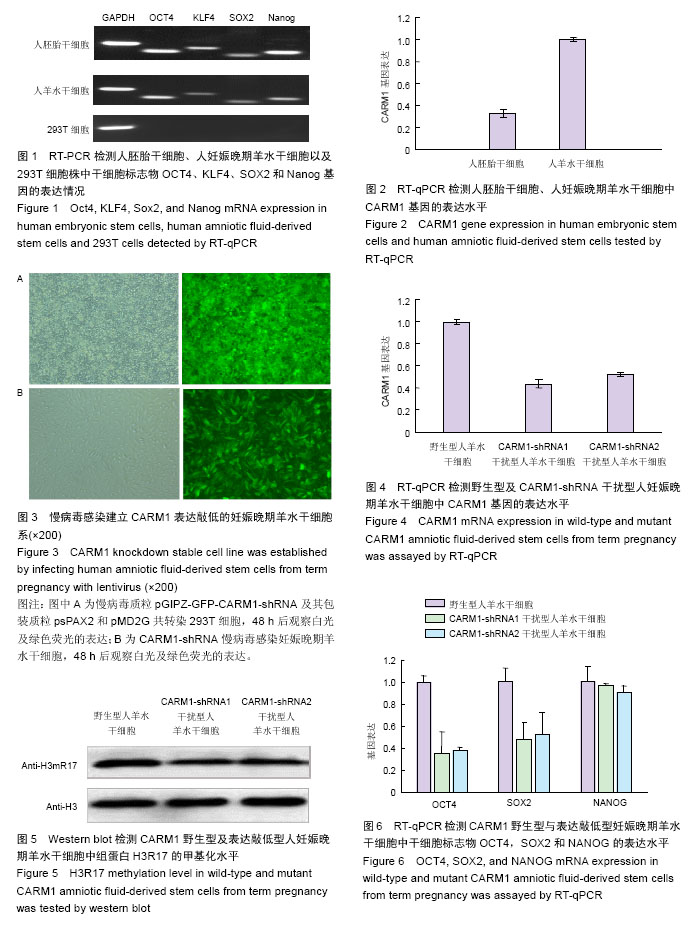| [1] De Coppi P, Callegari A, Chiavegato A, et al. Amniotic fluid and bone marrow derived mesenchymal stem cells can be converted to smooth muscle cells in the cryo-injured rat bladder and prevent compensatory hypertrophy of surviving smooth muscle cells. J Urol. 2007;177(1):369-376.
[2] De Coppi P, Bartsch G Jr, Siddiqui MM, et al. Isolation of amniotic stem cell lines with potential for therapy. Nat Biotechnol. 2007;25(1):100-106.
[3] Zhou J, Wang D, Liang T, et al. Amniotic fluid-derived mesenchymal stem cells: characteristics and therapeutic applications. Arch Gynecol Obstet. 2014;290(2):223-231.
[4] Bajek A, Olkowska J, Gurtowska N, et al. Human amniotic-fluid-derived stem cells: a unique source for regenerative medicine. Expert Opin Biol Ther. 2014; 14(6):831-839.
[5] Benavides OM, Petsche JJ, Moise KJ Jr, et al. Evaluation of endothelial cells differentiated from amniotic fluid-derived stem cells. Tissue Eng Part A. 2012;18(11-12):1123-1131.
[6] Bitsika V, Roubelakis MG, Zagoura D, et al. Human amniotic fluid-derived mesenchymal stem cells as therapeutic vehicles: a novel approach for the treatment of bladder cancer. Stem Cells Dev. 2012; 21(7):1097-1111.
[7] Torres-Padilla ME, Parfitt DE, Kouzarides T, et al. Histone arginine methylation regulates pluripotency in the early mouse embryo.Nature. 2007;445(7124): 214-218.
[8] Reik W, Surani MA.Germline and Pluripotent Stem Cells. Cold Spring Harb Perspect Biol. 2015;7(11). pii: a019422.
[9] Zhao HY, Zhang YJ, Dai H, et al. CARM1 mediates modulation of Sox2. PLoS One. 2011;6(10):e27026.
[10] Jahan S, Davie JR. Protein arginine methyltransferases (PRMTs): role in chromatin organization. Adv Biol Regul. 2015;57:173-184.
[11] Wu Q, Bruce AW, Jedrusik A, et al. CARM1 is required in embryonic stem cells to maintain pluripotency and resist differentiation. Stem Cells. 2009;27(11):2637- 2645.
[12] Kawabe Y, Wang YX, McKinnell IW, et al. Carm1 regulates Pax7 transcriptional activity through MLL1/2 recruitment during asymmetric satellite stem cell divisions. Cell Stem Cell. 2012;11(3):333-345.
[13] Li C, Li W, Liu H, et al. Research development of amniotic fluid-derived stem cells in regenerative medicine. Zhongguo Xiu Fu Chong Jian Wai Ke Za Zhi. 2013;27(10):1262-1266.
[14] Martinelli D, Pereira RC, Mogni M, et al. A humanized system to expand in vitro amniotic fluid-derived stem cells intended for clinical application. Cytotherapy. 2016;18(3):438-451.
[15] You Q, Cai L, Zheng J, et al. Isolation of human mesenchymal stem cells from third-trimester amniotic fluid.Int J Gynaecol Obstet. 2008;103(2):149-152.
[16] Rodrigues MT, Lee SJ, Gomes ME, et al. Amniotic fluid-derived stem cells as a cell source for bone tissue engineering. Tissue Eng Part A. 2012;18(23-24): 2518-2527.
[17] Pipino C, Pandolfi A. Osteogenic differentiation of amniotic fluid mesenchymal stromal cells and their bone regeneration potential. World J Stem Cells. 2015;7(4):681-690.
[18] Petsche Connell J, Camci-Unal G, Khademhosseini A, et al. Amniotic fluid-derived stem cells for cardiovascular tissue engineering applications. Tissue Eng Part B Rev. 2013;19(4):368-379.
[19] Kim J, Lee Y, Kim H, et al. Human amniotic fluid-derived stem cells have characteristics of multipotent stem cells. Cell Prolif. 2007;40(1):75-90.
[20] Wolf SS. The protein arginine methyltransferase family: an update about function, new perspectives and the physiological role in humans. Cell Mol Life Sci. 2009; 66(13):2109-2121.
[21] Franek M, Legartová S, Suchánková J, et al. CARM1 modulators affect epigenome of stem cells and change morphology of nucleoli. Physiol Res. 2015;64(5):769- 782.
[22] Jacques SL, Aquino KP, Gureasko J, et al. CARM1 Preferentially Methylates H3R17 over H3R26 through a Random Kinetic Mechanism. Biochemistry. 2016; 55(11):1635-1644.
[23] Wang SC, Dowhan DH, Eriksson NA, et al. CARM1/PRMT4 is necessary for the glycogen gene expression programme in skeletal muscle cells. Biochem J. 2012;444(2):323-331.
[24] Wu J, Cui N, Wang R, et al. A role for CARM1-mediated histone H3 arginine methylation in protecting histone acetylation by releasing corepressors from chromatin. PLoS One. 2012;7(6): e34692.
[25] O'Brien KB, Alberich-Jordà M, Yadav N, et al. CARM1 is required for proper control of proliferation and differentiation of pulmonary epithelial cells. Development. 2010;137(13):2147-2156.
[26] Karlmark KR, Freilinger A, Marton E, et al. Activation of ectopic Oct-4 and Rex-1 promoters in human amniotic fluid cells. Int J Mol Med. 2005;16(6):987-992.
[27] Mitsui K, Tokuzawa Y, Itoh H, et al. The homeoprotein Nanog is required for maintenance of pluripotency in mouse epiblast and ES cells. Cell. 2003;113(5): 631-642.
[28] Du J, Lu GX. Advances in the study on molecular mechanism for maintaining the undifferentiated state of embryonic stem cells. Yi Chuan. 2005;27(5):828-832.
[29] Niwa H, Miyazaki J, Smith AG. Quantitative expression of Oct-3/4 defines differentiation, dedifferentiation or self-renewal of ES cells. Nat Genet. 2000;24(4):372- 376.
[30] Zuk PA. The intracellular distribution of the ES cell totipotent markers OCT4 and Sox2 in adult stem cells differs dramatically according to commercial antibody used. J Cell Biochem. 2009;106(5):867-877. |
.jpg)

.jpg)
.jpg)